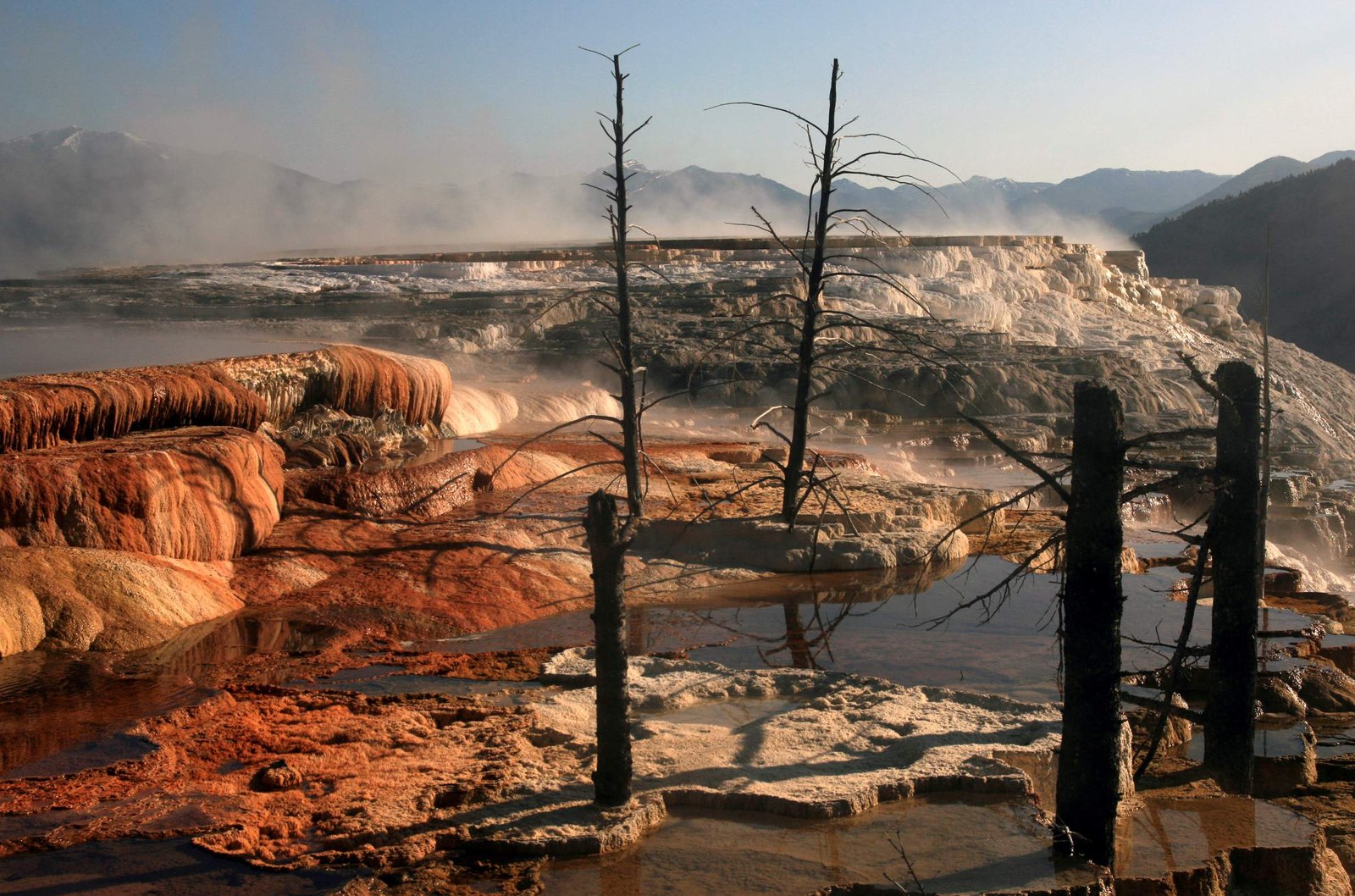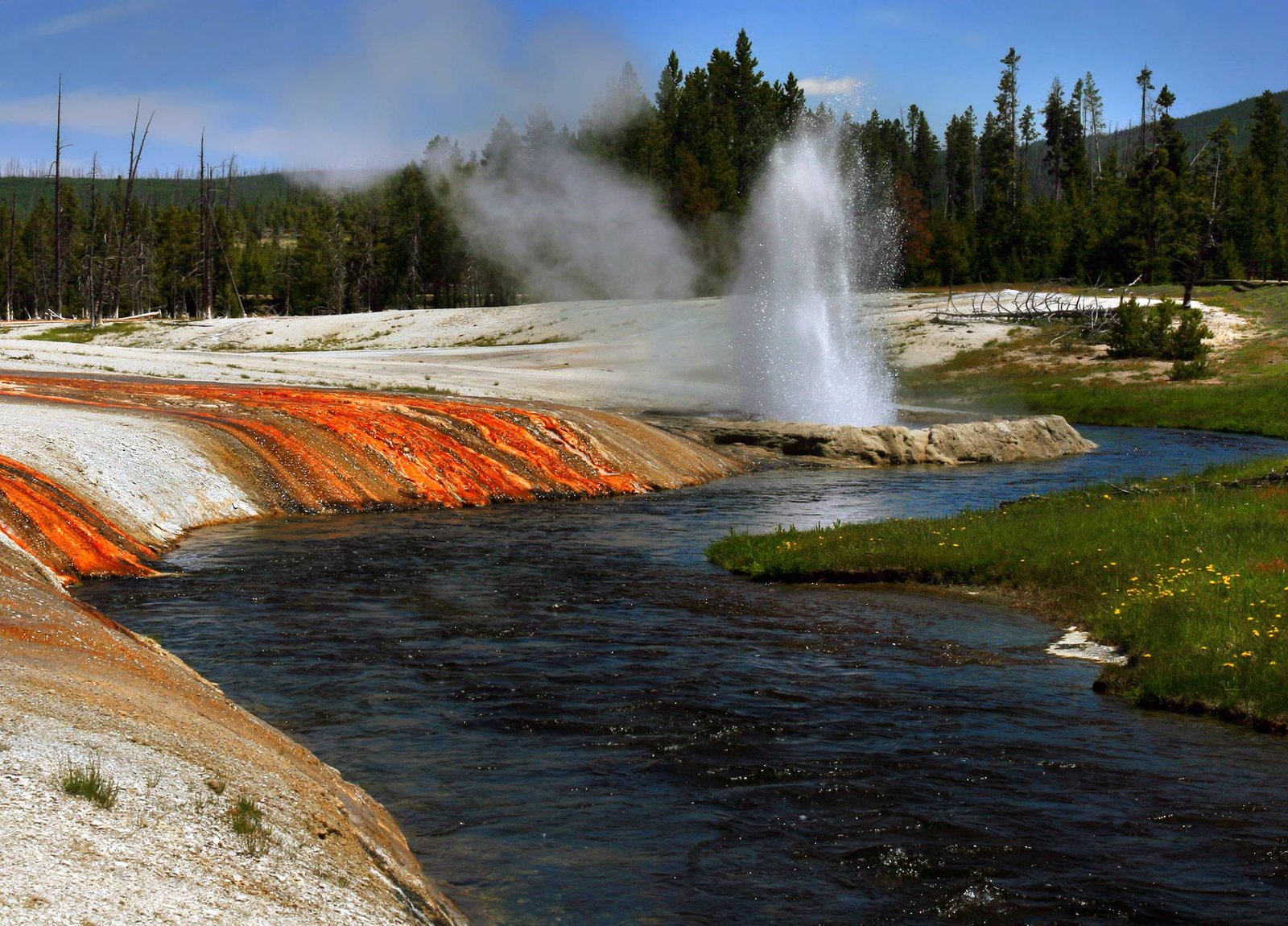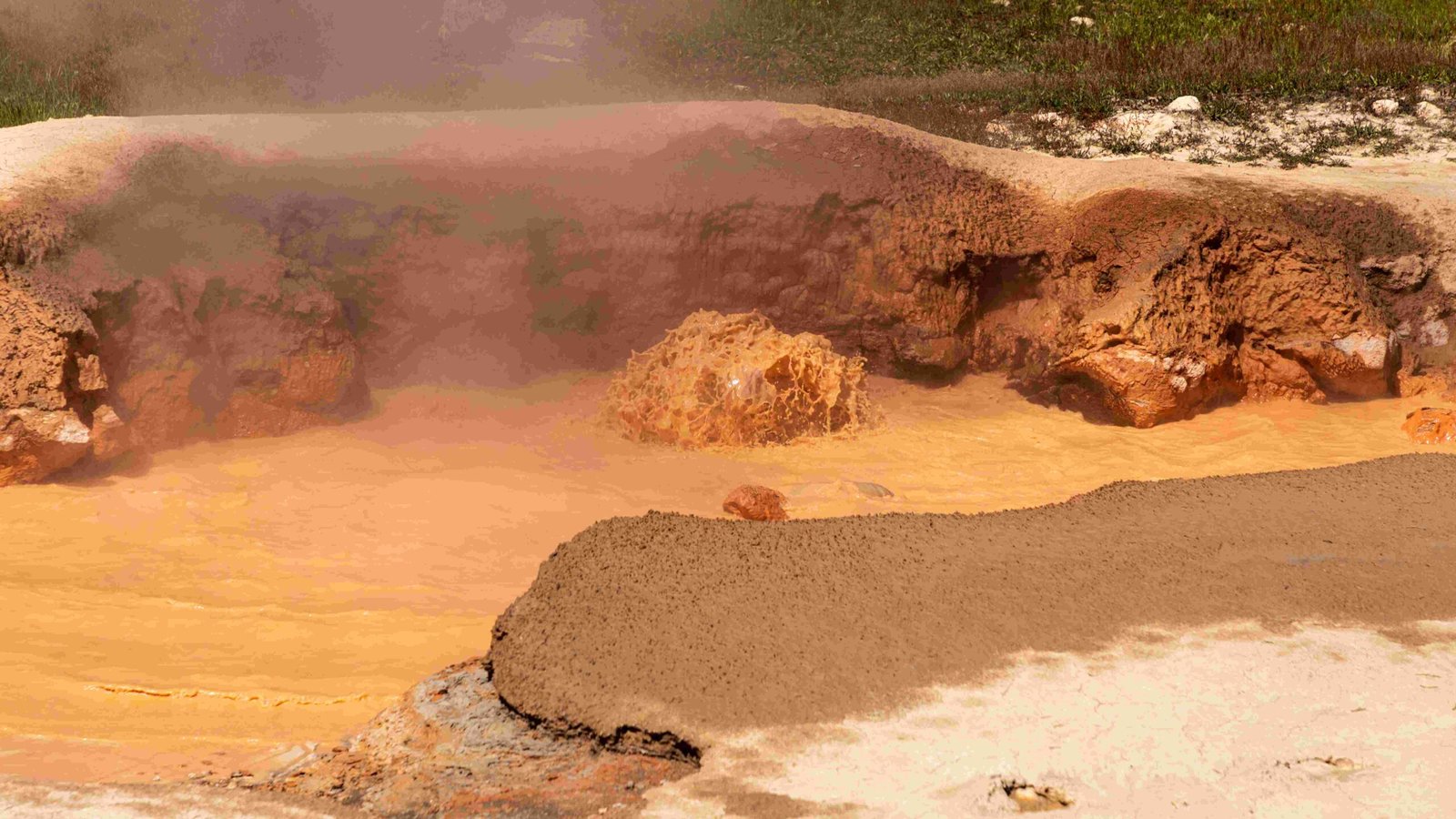Yellowstone National Park’s natural steam source is a remarkable geothermal phenomenon driven by a vast magma reservoir beneath the park. With temperatures exceeding 1,475°F (800°C), this heat warms surrounding rocks and groundwater, creating spectacular geysers, hot springs, and fumaroles. The park boasts over 10,000 hydrothermal features, including the world-famous Old Faithful geyser, making it one of the most geothermally active areas on Earth.
What is the Origin of Yellowstone’s Natural Steam?

The natural steam at Yellowstone originates from the interaction between groundwater and the hot rock masses beneath the park. Here’s how this process works:
- Rainwater and snowmelt seep into the ground.
- The magma reservoir heats this water to extremely high temperatures.
- As the heated water rises back to the surface, it can create steam explosions if pressure is suddenly released.
- This process drives the eruptions of geysers and other thermal features.
The high pressure at depth allows water to remain liquid above its normal boiling point. When this pressure reduces as the water nears the surface, it rapidly turns into steam, causing the dramatic eruptions we see in geysers.
Where are the Hottest Steam Vents Located in Yellowstone?

Yellowstone’s geothermal features are scattered throughout the park, but some areas are particularly notable for their intense heat and steam production:
-
Norris Geyser Basin: This is Yellowstone’s hottest geyser basin, with water temperatures recorded as high as 459°F (237°C) at a depth of only 1,087 feet.
-
Mary Bay: Located on the north edge of Yellowstone Lake, this area features a large hydrothermal-explosion crater formed about 13,800 years ago, indicating significant geothermal activity.
-
Roaring Mountain: Known for its numerous fumaroles, which create a constant hissing sound as steam escapes from the earth.
-
Mud Volcano Area: This area is characterized by turbid pools, fumaroles, and mud pots, showcasing the diverse forms of geothermal activity in the park.
What are the Primary Types of Steam Vents in Yellowstone?
Yellowstone’s steam vents come in various forms, each with unique characteristics:
1. Fumaroles
- Definition: Openings in the earth’s surface that emit steam and gases
- Characteristics:
- Hottest hydrothermal features in the park
- Produce loud hissing sounds
- Emit gases like carbon dioxide and hydrogen sulfide
- Notable Examples:
- Black Growler Steam Vent in Norris Geyser Basin
- Roaring Mountain fumaroles
2. Geysers
- Definition: Hot springs that periodically erupt, shooting water and steam into the air
- Characteristics:
- Eruptions caused by pressure buildup and release
- Varying eruption intervals and heights
- Notable Examples:
| Geyser Name | Location | Max Eruption Height | Eruption Frequency |
|————-|———-|———————|———————|
| Old Faithful | Upper Geyser Basin | 185 feet (56 m) | Every 90 minutes |
| Steamboat Geyser | Norris Geyser Basin | 390 feet (120 m) | Unpredictable |
| Grand Geyser | Upper Geyser Basin | 200 feet (61 m) | Every 6-15 hours |
3. Hot Springs
- Definition: Pools of geothermally heated groundwater
- Characteristics:
- Often have vibrant colors due to thermophilic bacteria
- Temperatures can exceed the boiling point of water
- Notable Examples:
- Grand Prismatic Spring (largest in the park)
- Morning Glory Pool
How Does Yellowstone’s Geothermal Activity Compare to Other Locations Worldwide?
Yellowstone’s geothermal activity is unparalleled in its scale and diversity:
- Number of Features: Yellowstone has over half of the world’s geysers and hydrothermal features.
- Size of System: The Yellowstone Caldera is one of the largest active volcanic systems in the world.
- Variety: The park showcases a wide range of geothermal phenomena, from geysers to mud pots to fumaroles.
Compared to other geothermal areas:
- Iceland: Known for its geothermal activity, but has fewer geysers than Yellowstone.
- New Zealand: Rotorua area has significant geothermal features but on a smaller scale.
- Kamchatka, Russia: Has the Valley of Geysers, but with fewer total features than Yellowstone.
What Safety Precautions Should Visitors Take Around Steam Vents?
When visiting Yellowstone’s geothermal areas, safety is paramount:
- Stay on designated boardwalks and trails: The ground around thermal features can be thin and fragile.
- Keep a safe distance: Steam vents can suddenly erupt or change temperature.
- Supervise children closely: Ensure they understand the dangers and stay close.
- Do not touch or throw objects into thermal features: This can damage the delicate ecosystems and is illegal.
- Be aware of changing conditions: Earthquakes can alter the behavior of thermal features.
- Follow park regulations: These are designed to protect both visitors and the natural features.
How Does Yellowstone’s Natural Steam Contribute to Scientific Research?
Yellowstone’s natural steam vents provide invaluable opportunities for scientific research:
-
Extremophile Studies: The hot, acidic environments host unique microorganisms, offering insights into early life on Earth and potential life on other planets.
-
Geological Research: Studying the park’s geothermal system helps scientists understand volcanic processes and magma chamber dynamics.
-
Climate Change Monitoring: Changes in geothermal activity can provide data on long-term climate trends.
-
Energy Research: Yellowstone’s geothermal features serve as natural laboratories for studying potential geothermal energy applications.
-
Hydrothermal Explosion Research: The park’s history of hydrothermal explosions offers insights into these rare but potentially hazardous events.
By studying Yellowstone’s natural steam sources, scientists continue to uncover new insights about our planet’s geological processes and the potential for life in extreme environments.

